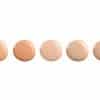Key Points:
-
Tips for building a personalized skincare routine include living a healthy lifestyle and experimenting with products.
-
Figure out your skin type by taking the skincare quiz.
-
Only use cleansers, moisturizers, and sunscreen when starting a skincare routine.
Attention all skincare enthusiasts! Are you tired of trying countless products with little to no results? Do you want to achieve a glowing complexion but don't know where to start? Well, look no further! There are simple ways to build a skincare routine when you're starting over or starting from scratch.
Dive into the world of skincare and learn step-by-step how to build a personalized skincare routine that leaves your skin looking and feeling its best. Grab a pen and paper, and get ready to glow up!
Personalized Skincare Routines
Personalized skincare routines depend on many factors. To begin, it's important to get to know your skin as this will ensure your best chances of finding products that work best for your individual needs. This five-step process is a routine itself to complete daily.
Step One: Cleanse Your Face
Wash your face with a gentle cleanser and pat dry. Wait for an hour or two before moving on to the next step.
Step Two: Observe Your Skin
Look at your skin and note any oiliness or dryness. Pay attention to areas like your nose, forehead, and chin, which are usually the oiliest.
Step Three: Blot Your Skin
Lightly press a tissue to various parts of your face, including your forehead, nose, and chin. If the tissue shows an oil residue, your skin is likely oily.
Step Four: Consider Other Factors
Take into account any other skin concerns, such as redness, sensitivity, or breakouts.
Step Five: Determine Your Skin Type
Based on your observations, you can determine your skin type. There are four main skin types: oily, dry, combination, and sensitive. Read the tips below for determining your skin type.
Tips For Building A Personalized Skincare Routine
Creating a personalized skincare routine is overwhelming, but with the proper steps and tips, you can achieve the healthy, glowing skin you've always wanted. There are essential tips that help you build a routine that's perfect for you. Whether you're new to skincare or looking to revamp your existing practice, these tips give you the foundation to start seeing results.
Identify Your Skin Type and Concerns
Knowing your skin type and any specific concerns you have (such as acne, dryness, or dark spots) helps you choose products best suited for you. There are four main skin types: dry, oily, combination, and normal. Identifying which type you have improves your chances of finding products that work well on your skin.
Take a Skincare Quiz
Understanding your skin type is crucial in building an effective skincare routine. The products and ingredients you choose depend on whether you have oily, dry, combination, normal, or sensitive skin.
How do you determine your skin type? There are guides to help you through a simple process to determine your skin type. Once you know it, you can start building a routine that works best for you.
Consult a Dermatologist
If you're unsure about your skin type or have specific skin concerns, consider visiting a dermatologist for a professional evaluation. Dermatologists address your skin's needs and guide you in the right direction for better skin health.
Keep It Simple
There are many different types of skincare products, including serums, toners, face masks, and more. Start with a basic routine of cleansing, moisturizing, and protecting your skin from the sun, and then add other products as needed.
Experiment and Adjust
Give each product enough time to work before making any changes. Some skincare products may take up to six months to see results, so be patient and consistent. Also, stay open to switching things up if you do not see the desired results.
Don't Forget About Lifestyle Factors
Your diet, stress levels, and sleep quality all affect your skin. Make sure you're taking care of yourself both inside and out.
Be Consistent
A skincare routine is only effective if you stick to it. Make it a part of your daily routine and be consistent with the order, amount, and frequency of your products.
Don't Overdo It
Too many products or harsh ingredients damage your skin. Use products in moderation and listen to your skin's needs.
A Basic Skincare Routine For Beginners
Starting a skincare routine is intimidating – especially with many products on the market. Where do you begin? What products do you need? If you're a skincare beginner, don't worry. By the end, you can have a solid foundation for a routine that leaves your skin looking and feeling its best.
Cleansing
Cleansing is the first step in a skincare routine. It involves removing dirt, oil, and makeup from your skin. Cleansing is essential because it unclogs pores, prevents breakouts, and ensures that the other products in your routine penetrate your skin and work effectively.
There are different types of cleansers, including foaming, gel, and oil-based. Choosing a cleanser suitable for your skin type is important, as using the wrong kind of cleanser causes dryness, oiliness, or irritation.
To cleanse your skin, wet your face with warm water, apply a small amount of cleanser to your palms, and gently massage it into your face, making sure to avoid your eyes. Rinse with warm water and pat your skin dry with a clean towel. Cleansing should be done in the morning and at night as part of your daily skincare routine.
If you have dry skin, look for foaming, sulfate-free cleansers that contain ingredients like hyaluronic acid and glycerin to bring more moisture back into the skin. If you experience excess oil or combination skin, find cleansers that are non-comedogenic, meaning it doesn't clog pores. Ensure these have ingredients like salicylic acid or benzoyl peroxide to remove extra grease from your skin.
Moisturizer
Moisturizing is necessary for a skincare routine that helps hydrate and nourish the skin. Skin naturally loses water throughout the day, but moisturizers replenish it to keep your skin soft, smooth, and hydrated.
Moisturizers, including lotions, creams, and oils, come in different forms and are chosen based on skin type and personal preference. For example, people with oily skin typically want a lightweight lotion, while those with dry skin prefer a rich, creamy moisturizer.
To moisturize your skin, apply a small amount of moisturizer to your face and neck and gently massage it until it's fully absorbed. Moisturize in the morning and at night, after cleansing, and any other treatments you may use, such as toners or serums.
In addition to helping keep skin hydrated, moisturizing protects the skin against environmental factors such as dry air, cold weather, and sun exposure. Regularly moisturizing keeps your skin looking healthy, youthful, and radiant.
Sunscreen
Sunscreen is a skincare product that shields the skin from the harmful effects of the sun. Sunscreen works by absorbing or reflecting harmful ultraviolet (UV) rays from the sun, which cause skin damage and premature aging, and increase the risk of skin cancer.
Sunscreen is available in many different variations. From lotions and sprays to sticks and bars, there are many options to choose. Choosing a sunscreen based on your skin type is vital to ensure that it doesn't cause undesirable reactions on your skin.
If you experience symptoms of dry skin, like flakiness, dullness, and tightness, choose a sunscreen with hydrating ingredients such as aloe vera. Creamy textures are also best for dry skin types. If you have combination or oily skin, opt for an oil-free sunscreen stick with mattifying elements.
It's essential to pick a sunscreen with a high SPF (sun protection factor.) SPF indicates how much UV protection the sunscreen provides. A general rule of thumb is to use an SPF of at least 30. The more fair your skin is, the higher you want your SPF to be.
To use sunscreen, apply a generous amount to all exposed skin, paying extra attention to areas like the face, neck, arms, and legs. Sunscreen should be reapplied every 2 hours or immediately after swimming or sweating.
In addition to wearing sunscreen, it's also important to limit sun exposure during peak hours (roughly from 10 a.m. until 4 p.m.), wear protective clothing and hats, and seek shade when possible. By taking these steps, you’re protecting your skin from the harmful effects of the sun and keeping it looking healthy and youthful for years to come.
Get Ready For Beautiful Skin
Congratulations! You've just taken the first step towards a radiant, glowing complexion. Building a skincare routine may seem overwhelming at first, but by following the tips in this article, you're well on your way to developing a customized routine!
Remember: Everyone's skin is different, so what works for your best friend – or that beauty influencer you admire – may not work for you. The key to a successful skincare routine is to be patient and persistent. Don't be afraid to experiment and try new products to find what works best for your skin. Most importantly, have fun with it! Think of your skincare routine as a chance to pamper and treat yourself.
Go ahead, splurge on that luxurious face cream, take the time to massage it into your skin, and enjoy the results. Your glowing complexion thanks you!











